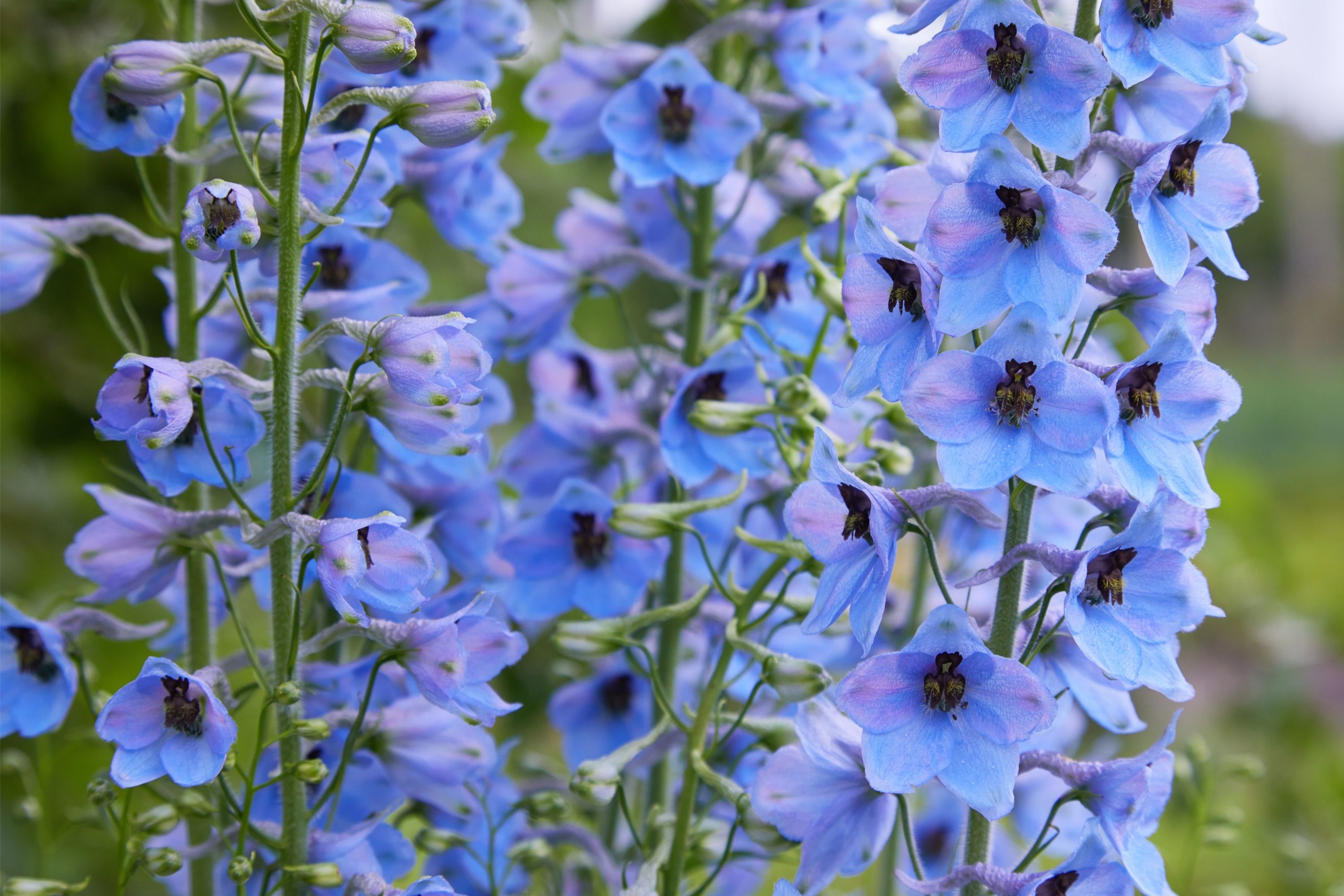Candle delphinium
(Delphinium elatum)

Description
Delphinium elatum, commonly known as the Alpine or Candle delphinium, is a species of flowering plant belonging to the buttercup family Ranunculaceae. The plant is native to central and southern Europe, where it grows in moist meadows, along streams, and in the undergrowth of mountain forests. The plant is prized for its tall, spiky flowers, which come in a variety of colors and are a favorite of gardeners and florists alike. Description Delphinium elatum is a herbaceous perennial plant that can grow up to six feet tall. The plant has a cluster of basal leaves that are deeply lobed and can reach up to one foot in diameter. The stem of the plant is tall and straight, with numerous branching stems that bear the flowers. The flowers of Delphinium elatum are borne on long, spiky inflorescences that can reach up to two feet in length. The flowers are irregular in shape and have five petals, with the upper two forming a distinctive spur. The flowers come in a range of colors, including blue, purple, pink, and white. Habitat and Distribution Delphinium elatum is native to central and southern Europe, where it grows in moist meadows, along streams, and in the undergrowth of mountain forests. The plant prefers cool, moist climates and can be found at elevations of up to 2,000 meters. Cultivation Delphinium elatum is a popular garden plant and is widely cultivated for its tall, showy flowers. The plant prefers full sun to partial shade and fertile, well-drained soil. The plant is hardy to USDA zones 3-7 and can be propagated by seed or division. To grow Delphinium elatum from seed, sow the seeds in a well-drained potting mix in late winter or early spring. The seeds should be covered lightly with soil and kept moist until they germinate. Once the seedlings are large enough, transplant them into individual pots and grow them on until they are large enough to plant out. To propagate Delphinium elatum by division, lift the plant in early spring or fall and carefully separate the clumps into smaller sections. Replant the divisions immediately and keep them well-watered until they are established. Pests and Diseases Delphinium elatum is susceptible to a number of pests and diseases, including slugs, snails, aphids, and powdery mildew. To prevent pest and disease problems, keep the plant healthy by providing good growing conditions and promptly remove any diseased or damaged plant material. Uses Delphinium elatum is widely used as an ornamental plant in gardens and as a cut flower in floral arrangements. The plant's tall, spiky flowers make an attractive addition to perennial borders, mixed borders, and cottage gardens. The flowers can also be dried for use in floral arrangements. The plant has also been used for medicinal purposes in traditional herbal medicine. The leaves and flowers of the plant were used to treat a variety of ailments, including fever, headache, and gastrointestinal problems. Conclusion Delphinium elatum is a beautiful and versatile plant that is widely cultivated for its tall, spiky flowers. The plant is native to central and southern Europe and grows in moist meadows, along streams, and in the undergrowth of mountain forests. The plant is easy to grow and can be propagated by seed or division. Although it is susceptible to a number of pests and diseases, it remains a favorite of gardeners and florists alike.
Taxonomic tree:







